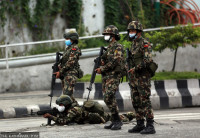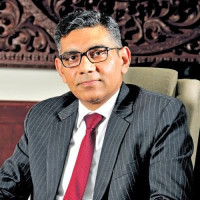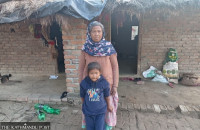National
Adoption of official languages recommended for provinces challenging, experts say
Many of the 11 languages do not have proper scripts, grammar and writing practices, so provinces should first spend on the standardisation of the scripts and grammars of the languages.
Tika R Pradhan
After studying for five years, the Language Commission on September 6 recommended 11 different languages to be used as official languages apart from the Nepali that is currently being used in the seven provinces.
Experts and observers have hailed the development as historic and said it has led the unilateral country towards an inclusive society as imagined by the constitution. However, they have warned that practical implementation of the commission's recommendation could be challenging as there are many factors that could impede its implementation.
“It’s a historic beginning,” said Malla K Sundar, an ethnic rights activist. “With the recommendation of the Language Commission, the door has opened for the provinces to use the languages for official use.”
In the report presented to President Bidya Devi Bhandari and Prime Minister Sher Bahadur Deuba, the commission has recommended Maithili and Limbu for Province 1; Bhojpuri, Maithili and Bajjika for Province 2; Tamang and Nepal Bhasa for Bagmati; Magar, Gurung and Bhojpuri for Gandaki; Tharu and Awadhi for Lumbini; Magar for Karnali; and Dotyali and Tharu for Sudur Paschim.
The first and foremost challenge to use these languages will begin from the provincial governments, with whom the Language Commission has not consulted properly.
“The authorities of the provincial governments refused to join the discussions organised by the Language Commission which shows that they could be reluctant to use the recommended languages,” said Yogendra Prasad Yadava, a linguist, who was part of the research team for the commission. “I think the provinces could delay its implementation without saying they won’t use the languages.”
One of the most important challenges for the provinces would be to manage funds for resources including manpower for bringing the languages to official use in the governments, judiciary and education sectors. Many of the 11 languages do not have proper scripts, grammar and writing practices. So the respective governments should first spend on the standardisation of the scripts and grammars of the languages before they could be used as official languages.
With the Language Commission completing its job to recommend the languages following 11 different criteria, now it's up to the provincial governments to draft the necessary laws to implement them.
According to Lavadeo Awasthi, chairperson of the Language Commission, they have taken the population of the speakers of the languages from the 2011 census as the fundamental basis for recommending the languages. However, some experts have questioned how relevant the 2011 census would be when the country has already started a new census from Wednesday.
“Actually, we had also realised this but we had only five years to submit our report. So we had no option but to submit the report,” Awasthi told the Post. “But we have suggested that the recommendations should be reviewed and amended if the latest census revealed any substantial changes in the existing data.”
Nepal Federation of Indigenous Nationalities (Nefin)—the umbrella organisation of the indigenous people of the country, has also questioned the relevance of the criteria used by the Language Commission while selecting the languages and also asked why the ethnic groups concerned were not consulted. Issuing a statement on Thursday, its chairman Jagat Baram said they will support the implementation of the recommendation only after their concerns are addressed and the report becomes acceptable to all.
“Now the language groups concerned and intellectuals pressure the respective provincial governments to draft necessary laws at the earliest,” said Amrit Yonjan, another linguist and ethnic rights activist. “In Bagmati, there are some Provincial Assembly members who are preparing to draft the bill on language use if the government refuses to bring it.”
But less than a week after the recommendation, the Nepal Rana Tharu Society has objected to the recommendation of Tharu as the language for official use in Sudur Paschim Province claiming that the Rana Tharu, which was already recognised by the state, should be the official language.
Organising a press meet in Dhangadi on Sunday, 16 different organisations of the Rana Tharu community of Kailali and Kanchanpur expressed their dissatisfaction for ignoring their language.
Experts say such disappointments would now pour in from various language communities and that would help create pressure on the government to gradually look after them all as there are more than 123 languages in the country and the Language Commission has identified eight more languages that need to be verified by the upcoming census.
Article 7(2) of the constitution states that a province may, by provincial law, determine one or more languages of the nation spoken by a majority of people within the province, as its official language(s), in addition to the Nepali language. While article 7(3) says other matters relating to language shall be as decided by the government on the recommendation of the Language Commission.
The authorities of the provincial governments may demand additional resources for developing and standardising the languages before using them for official purposes including for teaching and learning at schools. This will require a lot of resources.
In its report, the Language Commission has also said it was the responsibility of the commission to recommend the languages to be used by the provincial governments as per Article 7(3) of the constitution.
The commission has collected details of the languages from more than 340 wards with the help of the local governments and the languages used by a maximum number of people could be used as an official language after teaching them at schools so that they could gradually be used for official purposes, the report stated.




 18.12°C Kathmandu
18.12°C Kathmandu













%20(1).jpg&w=300&height=200)

